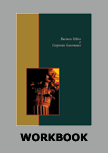Living Goods - Developing a Sustainable Business Model to Provide Healthcare Services in Uganda




|
|
ICMR HOME | ICMR Case Study Collection
To download Living Goods - Developing a Sustainable Business Model to Provide Healthcare Services in Uganda case study
(Case Code: BECG104) click on the button below, and select the case from the list of available cases:


» Business Ethics Case Studies
» Business Ethics Short Case Studies
» View Detailed Pricing Info
» How To Order This Case
» Business Case Studies
» Area Specific Case Studies
» Industry Wise Case Studies
» Company Wise Case Studies
Please note:
This case study was compiled from published sources, and is intended to be used as a basis for class discussion. It is not intended to illustrate either effective or ineffective handling of a management situation. Nor is it a primary information source.
|
Case Details: |
Price: |
| Case Code |
: |
BECG104 |
For delivery in electronic format: Rs.
300;
For delivery through courier (within India): Rs. 300 + Rs. 25 for Shipping & Handling Charges
ThemesSustainability |
| Case Length |
: |
13 Pages |
| Period |
: |
1994-2009 |
| Pub Date |
: |
2009 |
| Teaching Note |
: |
Not Available |
| Organization |
: |
Living Goods |
| Industry |
: |
Healthcare |
| Countries
|
: |
US |
Abstract:
|
The case examines the business model of Living Goods, the US-based non-profit organization. Started by Chris Slaughter, Living Goods' first venture was in Uganda, where it partnered with a microfinance organization BRAC to provide basic healthcare services to the poor, in a sustainable manner. Living Goods selected few women from BRAC's microfinance programs to appoint them as Community Health Promoters (CHPs). They were given small loan from BRAC to procure essential medicines and other products. Living Goods trained and helped CHPs in selling medicines for a small profit. This model addressed several issues like non-availability of healthcare, spurious medicines, high costs of medicines and lost productivity.
|
|
At the same time, it helped CHPs engage in income generating activities. To make the model viable, Living Goods encouraged CHPs to sell other products like soaps, skin lotions, shampoos, etc. Living Goods also distributed fuel efficient stoves, solar lanterns and other innovative products through the CHPs.
Issues:
» Understand the business model of Living Goods.
» Evaluate the sustainability of the company's business model.
» Examine the advantages and disadvantages of Living Goods' business model and its future potential in Uganda.
» Critically analyze if the Living Goods' business model is scalable and replicable in other developing countries.
Contents:
Keywords:
Living Goods, Microfinance, Responsibility Pioneers, Sustainability, Triple Bottomline Approach, Direct Marketing Model, Business Model, BRAC, Community Health Promoters, Avon Products, Rural Communities, Health Distribution Systems, Sustainable Distribution Platforms, Non-profit Social Enterprise
A Responsibility Pioneer
- Next Page>>

|
|




